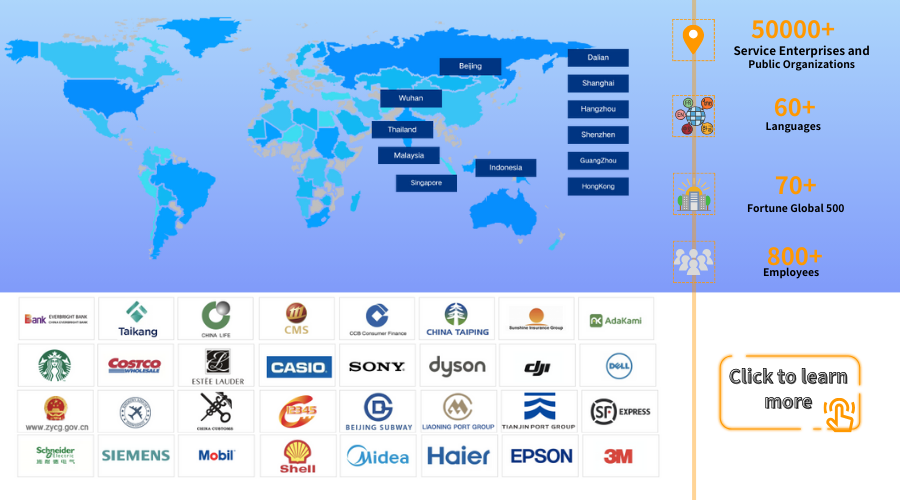Cloud Call Center System: Value Growth in Enrollment, Q&A, and After-sales Services for the Online Education Industry
文章摘要:The online education industry is undergoing a transformation from extensive growth to refined operations. Cloud call center systems, with their technical integration, service flexibility, and data-driven capabilities, have become core tools for institutions to improve service efficiency and optimize user experience. From enrollment consulting to after-sales maintenance, cloud call center systems have reconstructed educational service processes through functions such as omnichannel coverage, AI intelligent interaction, and data insight, providing a quantifiable path for value growth in the industry.
Table of contents for this article
- I. Enrollment Phase: A Dual Engine for Precision Reach and Efficient Conversion
- 1. Intelligent Outbound Calls: An "Accelerator" for Large-Scale Customer Acquisition
- 2. Omnichannel Integration: Building a Seamless Consulting Network
- 3. Personalized Recommendations: Precision Matching Based on User Portraits
- II. Q&A Phase: Dual Guarantees of Instant Response and In-Depth Service
- 1. Intelligent IVR Navigation: 24/7 Uninterrupted Service
- 2. Intelligent Assistance: Human-Machine Collaboration to Improve Service Efficiency
- 3. Video Customer Service: Visual Solutions for Complex Issues
- III. After-Sales Phase: Full-Link Tracking and Brand Loyalty Building
- 1. Ticket Automation: From Issue Acceptance to Closed-Loop Management
- 2. Satisfaction Surveys: Dynamic Optimization of Service Quality
- 3. Student Lifecycle Management: Extension from Service to Marketing
- IV. Technical Architecture: Underlying Capabilities Supporting Educational Scenarios
- 1. Elastic Deployment: Adapting to Business Peaks and Valleys
- 2. Security and Compliance: Safeguarding Educational Data Assets
- 3. Open Ecosystem: Seamless Integration with Educational Business Systems
- V. Conclusion
I. Enrollment Phase: A Dual Engine for Precision Reach and Efficient Conversion
1. Intelligent Outbound Calls: An "Accelerator" for Large-Scale Customer Acquisition
2. Omnichannel Integration: Building a Seamless Consulting Network
3. Personalized Recommendations: Precision Matching Based on User Portraits
II. Q&A Phase: Dual Guarantees of Instant Response and In-Depth Service
1. Intelligent IVR Navigation: 24/7 Uninterrupted Service
2. Intelligent Assistance: Human-Machine Collaboration to Improve Service Efficiency
3. Video Customer Service: Visual Solutions for Complex Issues
III. After-Sales Phase: Full-Link Tracking and Brand Loyalty Building
1. Ticket Automation: From Issue Acceptance to Closed-Loop Management
2. Satisfaction Surveys: Dynamic Optimization of Service Quality
3. Student Lifecycle Management: Extension from Service to Marketing

IV. Technical Architecture: Underlying Capabilities Supporting Educational Scenarios
1. Elastic Deployment: Adapting to Business Peaks and Valleys
2. Security and Compliance: Safeguarding Educational Data Assets
3. Open Ecosystem: Seamless Integration with Educational Business Systems
V. Conclusion
2. Omnichannel Integration: Building a Seamless Consulting Network
3. Personalized Recommendations: Precision Matching Based on User Portraits
II. Q&A Phase: Dual Guarantees of Instant Response and In-Depth Service
1. Intelligent IVR Navigation: 24/7 Uninterrupted Service
2. Intelligent Assistance: Human-Machine Collaboration to Improve Service Efficiency
3. Video Customer Service: Visual Solutions for Complex Issues
III. After-Sales Phase: Full-Link Tracking and Brand Loyalty Building
1. Ticket Automation: From Issue Acceptance to Closed-Loop Management
2. Satisfaction Surveys: Dynamic Optimization of Service Quality
3. Student Lifecycle Management: Extension from Service to Marketing

IV. Technical Architecture: Underlying Capabilities Supporting Educational Scenarios
1. Elastic Deployment: Adapting to Business Peaks and Valleys
2. Security and Compliance: Safeguarding Educational Data Assets
3. Open Ecosystem: Seamless Integration with Educational Business Systems
V. Conclusion
II. Q&A Phase: Dual Guarantees of Instant Response and In-Depth Service
1. Intelligent IVR Navigation: 24/7 Uninterrupted Service
2. Intelligent Assistance: Human-Machine Collaboration to Improve Service Efficiency
3. Video Customer Service: Visual Solutions for Complex Issues
III. After-Sales Phase: Full-Link Tracking and Brand Loyalty Building
1. Ticket Automation: From Issue Acceptance to Closed-Loop Management
2. Satisfaction Surveys: Dynamic Optimization of Service Quality
3. Student Lifecycle Management: Extension from Service to Marketing

IV. Technical Architecture: Underlying Capabilities Supporting Educational Scenarios
1. Elastic Deployment: Adapting to Business Peaks and Valleys
2. Security and Compliance: Safeguarding Educational Data Assets
3. Open Ecosystem: Seamless Integration with Educational Business Systems
V. Conclusion
2. Intelligent Assistance: Human-Machine Collaboration to Improve Service Efficiency
3. Video Customer Service: Visual Solutions for Complex Issues
III. After-Sales Phase: Full-Link Tracking and Brand Loyalty Building
1. Ticket Automation: From Issue Acceptance to Closed-Loop Management
2. Satisfaction Surveys: Dynamic Optimization of Service Quality
3. Student Lifecycle Management: Extension from Service to Marketing

IV. Technical Architecture: Underlying Capabilities Supporting Educational Scenarios
1. Elastic Deployment: Adapting to Business Peaks and Valleys
2. Security and Compliance: Safeguarding Educational Data Assets
3. Open Ecosystem: Seamless Integration with Educational Business Systems
V. Conclusion
III. After-Sales Phase: Full-Link Tracking and Brand Loyalty Building
1. Ticket Automation: From Issue Acceptance to Closed-Loop Management
2. Satisfaction Surveys: Dynamic Optimization of Service Quality
3. Student Lifecycle Management: Extension from Service to Marketing

IV. Technical Architecture: Underlying Capabilities Supporting Educational Scenarios
1. Elastic Deployment: Adapting to Business Peaks and Valleys
2. Security and Compliance: Safeguarding Educational Data Assets
3. Open Ecosystem: Seamless Integration with Educational Business Systems
V. Conclusion
2. Satisfaction Surveys: Dynamic Optimization of Service Quality
3. Student Lifecycle Management: Extension from Service to Marketing

IV. Technical Architecture: Underlying Capabilities Supporting Educational Scenarios
1. Elastic Deployment: Adapting to Business Peaks and Valleys
2. Security and Compliance: Safeguarding Educational Data Assets
3. Open Ecosystem: Seamless Integration with Educational Business Systems
V. Conclusion

IV. Technical Architecture: Underlying Capabilities Supporting Educational Scenarios
1. Elastic Deployment: Adapting to Business Peaks and Valleys
2. Security and Compliance: Safeguarding Educational Data Assets
3. Open Ecosystem: Seamless Integration with Educational Business Systems
V. Conclusion
2. Security and Compliance: Safeguarding Educational Data Assets
3. Open Ecosystem: Seamless Integration with Educational Business Systems
V. Conclusion
V. Conclusion
The article is original by Udesk, and when reprinted, the source must be indicated:https://my.udeskglobal.com/blog/cloud-call-center-system-value-growth-in-enrollment-qa-and-after-sales-services-for-the-online-education-industry.html
Advantages of cloud call center、Cloud call center、Cloud call center system、

 Customer Service& Support Blog
Customer Service& Support Blog


